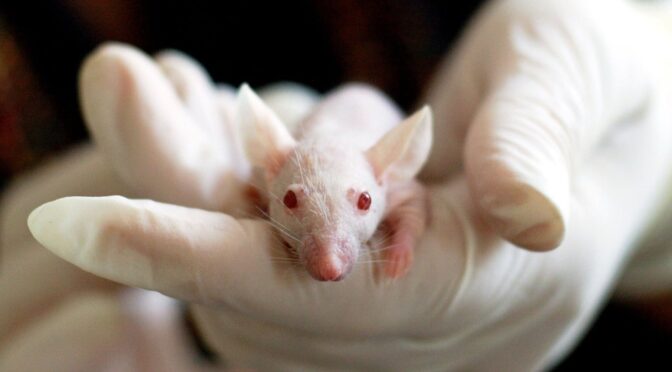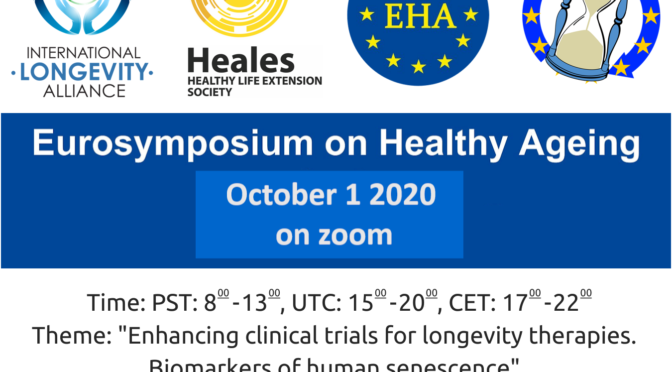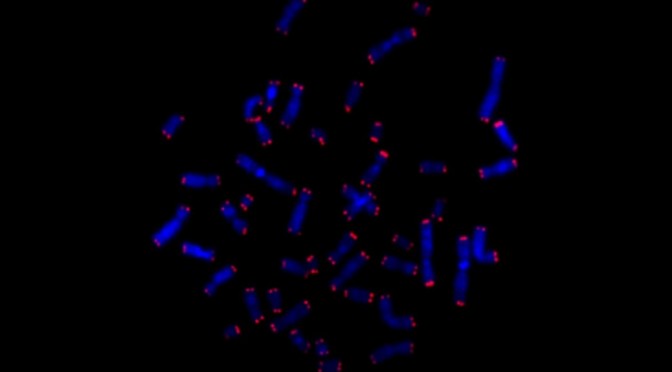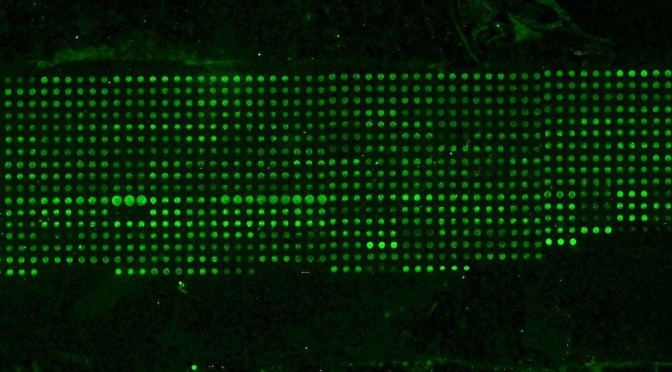The experiment started on November 22, 2020, all rats were 25 months old. Initially, we had 8 control rats and 9 treated rats, i.e. 17 female rats.
In December 2020: After only 1 month of the experiment, 2 treated rats died (on December 12 and 30). No control rats died but the weight of one of these was decreasing rapidly, indicating that it was likely to die soon. In addition, one of the treated rats had a large mammary tumor. 🡪Total: 8 control rats + 7 treated rats, 26 months old.
In January 2021: 3 control rats died (on January 8, 25 and 29). Notably, one rat that had lost a lot of weight dragged its hind legs and was suffering from myoneural junction degeneration. 🡪Total: 5 controls + 7 treated rats, 27 months old.
In February 2021: Looking at the evolution of the survival curve, we think that the treated rats might live longer, as we had not had any deaths of treated rats for 13 weeks. 🡪Total: 5 control rats + 7 treated rats, 28 months old.
In March 2012: 2 more control rats died, they had lost weight and were weak (March 24 and 31). It now seems more likely that treated rats live longer than untreated ones. 🡪Total: 3 control rats + 7 treated rats, 29 months old.
In April 20021: A control rat died on April 11. The rat was in agony and we found a mammary tumor. Currently, only 25% of control rats survive. The plasma treated rats are doing well so far. So it seems clear that they will outlive the control rats. The question is how long they will survive. 🡪Total: 2 control rats + 7 treated rats, 30 months old.
In May 2021: Another control rat died on May 5, 2021. It was losing weight and had dropped below 200 gr. Two treated rats died (May 3 and 25). One of the two rats had a peri-ocular infection and the infection had penetrated the brain. Currently, only 13% of the control rats survive compared to the 67% of the experimental rats that are still alive. Regarding the results of motor tests, we had not observed any significant difference between the control and treated rats. 🡪Total: 1 control + 5 treated rats, aged 31 months.
In June 2021: The news is not very good. On June 4, another plasma treated rat died. Only 9 days after the last death of a treated rat (May 25). Surprisingly, the rat appeared to be healthy, stable in weight and had no obvious pathology. However, we did find blood in the vagina. We also noticed that another treated rat was losing a lot of weight, so it might die soon… Indeed, this rat died later in the month (June 22). The average lifespan of both groups so far is 29.8 months for the control rats and 32.0 months for the treated rats. The age of 50% survival is 2.2 months higher in the treated rats. Currently, there are 3 experimental (33%) and 1 control that are still alive and appear to be healthy. For the 3 treated rats, 2 are healthy and have no problems, but the 3rd is very lean with a body weight of 175 gr and will probably be next, but when? 🡪Total: 1 control + 3 treated rats, 32 months old.
In July 2021: As predicted, this rat died on July 2. The last control rat is doing reasonably well. 🡪Total: 1 control +2 treated rats, 33 months old.
In August 2021: Another treated rat died on August 3. 🡪Total: 1 control + 1 treated rat, 34 months old.
In September 2021: At the beginning of the month, the treated rat and the control rat were alive. Neither had any obvious pathology. However, the treated rat showed a progressive decline and was not likely to live beyond September. Indeed, the last treated rat died on September 24. The last control appears healthy and will not die soon. Its body weight and appearance remained stable for at least two months. 🡪Total: 1 control + 0 treated rats, 35 months old.
In October 2021: On October 18, the last control died at the age of 36 months, which is the maximum lifespan of albino rats in the laboratory. 🡪Total: 0 controls + 0 treated rats, 36 months old. End of the experiment!
The first conclusions are:
- Regular (fortnightly) treatment of old rats with young plasma temporarily keeps the rats healthier than untreated ones.
- As a group, control rats emerge from the plateau portion of the survival curve earlier than treated rats. This represents an approximate 2-month increase in survival for the 50% of treated rats.
- However, when treated rats leave the plateau region, the mortality rate is as rapid as in controls (comparable slopes).
- The maximum lifespan was not significantly prolonged by the young plasma treatment. The fact that one control survived all treated rats did not change the statistics of the experiment.
- When treated rats leave the plateau area, their appearance deteriorates and they look like the surviving control.
What will happen next? We plan to measure epigenetic age in blood samples from control and experimental animals every 15 days during the experiment. We plan to send the blood DNA to Steve Horvath. From the DNA methylation data, we will also analyze what is called the DNA methylation landscape. We first need to organize the blood samples collected over nearly a year and discuss with Dr. Horvath whether we measure them all or select some.
The experiment began on January 29, 2021, when all rats were 24 months old. Initially, we had 8 control rats and 8 treated rats, i.e. 16 female rats.
The objectives of the study are to evaluate the extension of the lifespan of old rats after treatment with plasma fractionation and inflammatory biomarker levels at periodic intervals throughout the life of the animal.
Different parameters will be evaluated: body weight, grip strength, cytokine estimation, TNF-alpha and IL-6 (Interleukin-6) levels. The experimental group will receive a total of four intravenous injections of « Elixir » (E5), 0.7- 1 ml, every 90 days.
February to October 2021: No rats died. They were all in good health. 3 doses of Elixir have already been injected. A first dose in February, a second in April and a third in July. The body weight of the treated rats was 275 gr at the beginning of the experiment and 325 gr after 7 months. Treated rats had a better coat, less fat and more muscle mass. In July, the difference was minimal, not very noticeable. But by September, there was a clear physical difference between the control and treated rats. They were more active and healthier. Grip strength was significantly higher in the treated rats than in the control rats. TNF-Alpha and IL-6 levels were significantly lower in treated rats than in control rats. 🡪Total: 8 controls + 8 treated rats, 24 months to 33 months.
In November 2021: All rats received their 4th dose at the end of October. The first control rat has died. Organs are being conserved to proceed with histopathological examination. 🡪Total: 7 controls + 8 treated, 34 months old.
In December 2021: A second control rat died on December 1ᵉʳ. 🡪Total: 6 controls + 8 treated, 35 months old.
This experiment is still ongoing at this time. We have to wait and see what happens. For now (i.e. January 2022), all the treated rats are still alive!
Update 2022:
In February 2022: 1 control rat died (4th February). A natural death, the animal showed no apparent signs of disease. The animal was very sullen for a week. On 14th February : 1st treated rats died. No signs of tumour or disease were observed in the animal during dissection. The organs of all dead animals in the study are kept for further research. 🡪Total: 5 controls + 7 treated rats, 37 months old.
In April 2022: One additional death in the treated group. 🡪Total: 5 controls + 6 treated rats, 39 months old.
In May 2022: 1st May : one control rat died. Only in 12 hours, on 5th May, there was 1 death in the control group and 1 death in the treated group. 20th May : one more control and one more treated rat died. Animals showed signs of multiple organ failure on dissection and had no symptoms of any disease. On 23th May, again one more treatment rat died. 🡪Total of the surviving rats: controls + 3 treated, 39 months old
Note: In addition to the Yuvan Research communication on the rat experiment, there is also information on a product called NEEL Gel. Heales vzw/asbl is not involved in the impact of E5 on humans.




